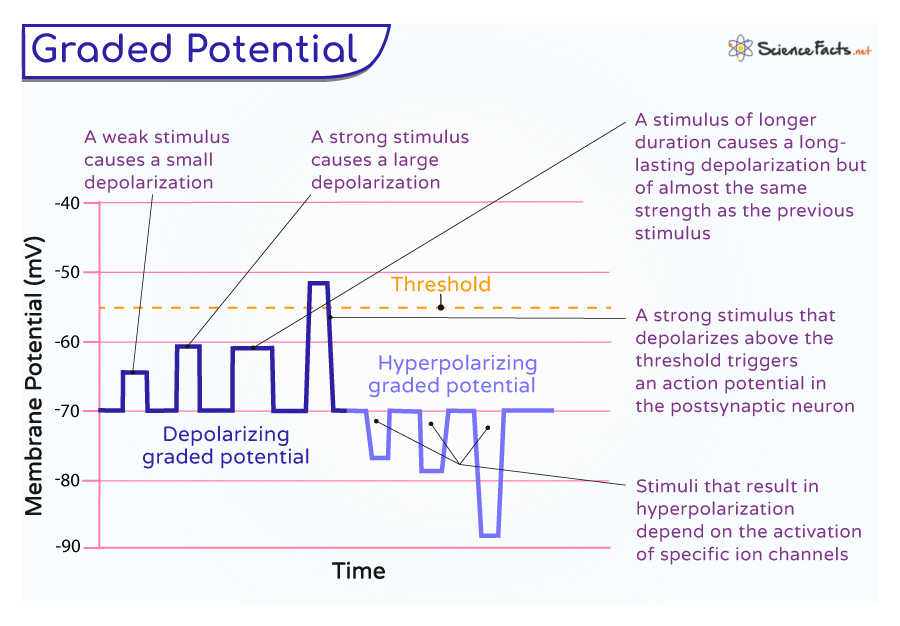They are called ‘graded’ because they can vary in magnitude based on the change in the membrane potential instead of all or none. A strong input (for example, a hot object) will result in a more significant change in the membrane potential, generating an action potential. Conversely, a weak input (a semi-hot object) will produce a minor shift in the membrane potential, reducing the chances of an action potential.
Causes of Graded Potential
Importance of Graded Potential
Graded Potential vs. Action Potential – Compare and Contrast
Depolarizing graded potential or excitatory postsynaptic potential (EPSP) results from Na+ or Ca2+ entering the cell. When a neurotransmitter attaches to its receptor, it opens ion channels, allowing positively charged ions to flow into the neuron. This influx of positive charge reduces the voltage difference across the neuron’s membrane, bringing it closer to the threshold required for an action potential to occur. Suppose the depolarization is strong enough and reaches the threshold; in that case, an action potential develops, transmitting information to other neurons. During the resting state, Na+ and Ca2+ have higher concentrations outside the cell than inside. Due to their high positive charge, movement of Na+ or Ca2+ cause the cell interior to become less negative than outside. On the other hand, hyperpolarizing graded potential or inhibitory postsynaptic potential (IPSP) occur when the binding of a neurotransmitter causes ion channels to open, allowing negatively charged ions such as Cl– to enter the cell or positively charged ions to leave. Graded potentials are different-strength signals over small distances for a brief time. They can be either depolarizing (excitatory) or hyperpolarizing (inhibitory) localized in the regions where they form. In contrast, an action potential is a rapid, all-or-nothing electrical event that occurs in the axon initiated when the membrane potential reaches the threshold level. Action potentials are very-brief events having a fixed magnitude.
